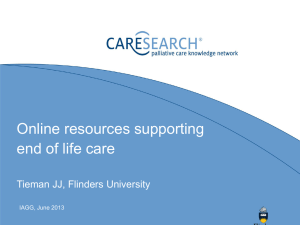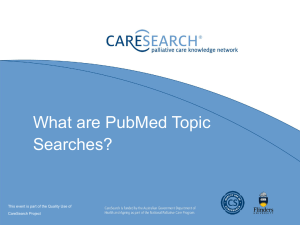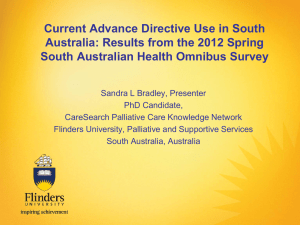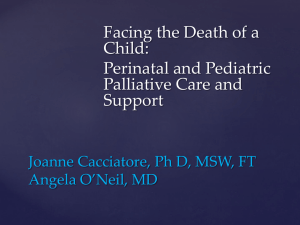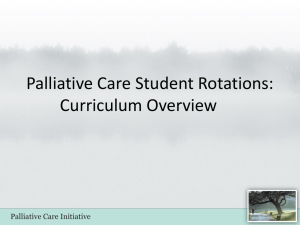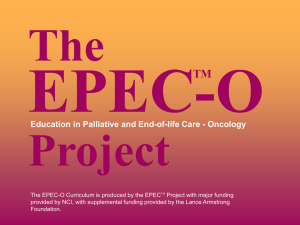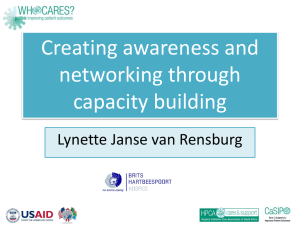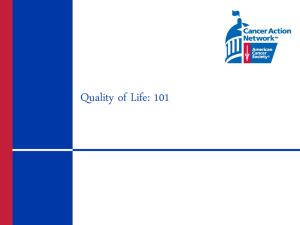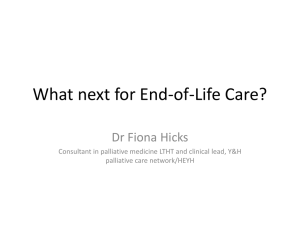Knowledge synthesis: Six steps to information and
advertisement
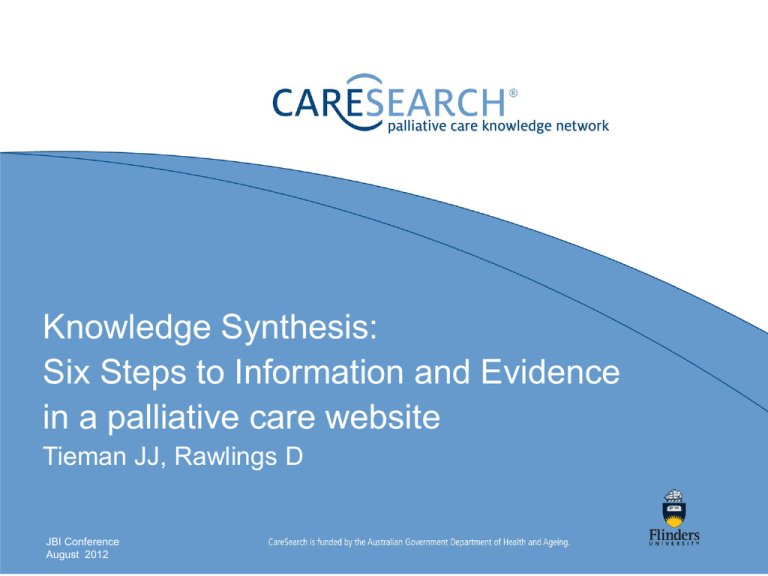
Knowledge Synthesis: Six Steps to Information and Evidence in a palliative care website Tieman JJ, Rawlings D JBI Conference August 2012 Purpose • • • • • • Role of knowledge in health Palliative care and nurses About CareSearch Why Six Steps Overview of Six Steps What we’ve learned Role of knowledge in health • Health as a knowledge industry • What we know from research can inform clinical decision making, policy making and service delivery • Evidence and guidance is growing. – 75 trials & 11 systematic reviews published every day Bastian et al, 2010 • How do individuals, services and systems know about, find and select what is important? About palliative care • Cure is not the goal of care • Referral based, co-morbidity, multidisciplinary • Patient and family as unit of care • Care provided in many settings • Often a family carer Palliative care and nurses • At home/Across settings – Specialist services, Other Clinical specialist services, Acute hospital, RACFs, Community, Rural and remote • Different roles – Generalist (RN, EN), Clinical specialist, Nurse practitioner • Multidisciplinary team About CareSearch • Palliative care resource – Evidence based – Online – Funded by DoHA • Audience – Health professional – Patients, carers, families • Knowledge Translation framework – Facilitate access to, and use of, evidence in practice Why Six Steps? • Size of the website – In one place, but over 2,000 pages • Best sources being used? • Familiarity with evidence contexts? • Creating utility – Evidence in formats that clinicians can use – Structured approach to literature – Awareness of evidence tools Overview of Six Steps 1. Is there a Clinical Practice page? 2. Check the Review Collection 3. Check for a related PubMed search topic 4. Build your own PubMed Search Topic 5. Check the CareSearch Grey Literature 6. Find about “How to search” Breathlessness Step 1: Clinical Practice Step 2: Review Collection Step 3: PubMed Searches Step 4: Create your own search Step 5: Grey Literature Step 6: Learn about searching Six Steps Learning Resources • Six Steps Factsheet – Summary sheet on the approach – Over 4,000 sheets ordered • My Learning Modules 1 & 2 Jan to July use – My Learning 1: 661 – My Learning 2: 223 Feedback on Six Steps • Hi thank you for these informative modules, I have always found it difficult to navigate around caresearch for some reason so now hopefully will find it more productive. • I never wanted to study this sort of stuff, but your information is very helpful and presented in a way that is informative and engaged • This form of education is valuable and inexpensive, very interesting and more so appropriate for a dynamic industry. What we’ve learned • Not enough to provide resources – Consider needs and skills of intended users – Part of a range of activities (e.g. NHN news, QUC) • Value in a structured approach – Encourages use of most appropriate resource – Promotes understanding of level of evidence – Team have a common framework • Positive feedback and usage CareSearch would like to thank the many people who contribute their time and expertise to the project including members of the National Advisory Group and the Knowledge Network Management Group. CareSearch is funded by the Australian Government Department of Health and Ageing. www.caresearch.com.au
